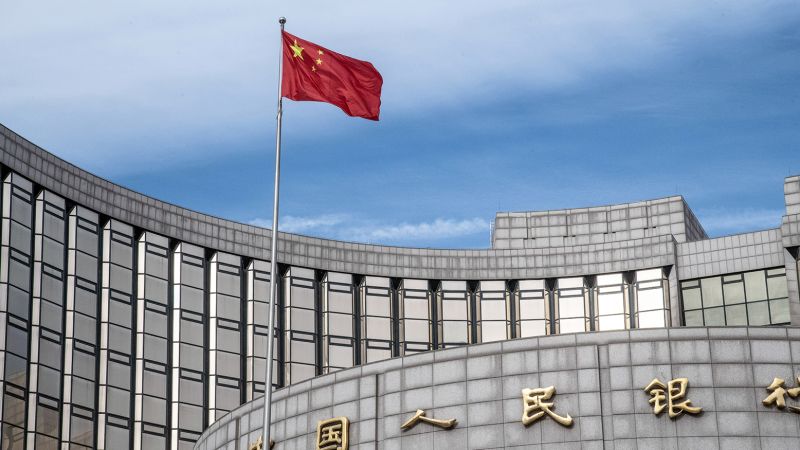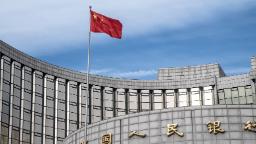

Hong Kong
CNN
—
For the past decade, China has lent massive sums to governments across Asia, Africa and Europe, growing its global influence through infrastructure megaprojects and becoming one of the world’s biggest creditors.
Now, a new study says Beijing has also become a major emergency rescue lender to those same countries, many of which are struggling to repay their debts.
Between 2008 and 2021, China spent $240 billion bailing out 22 countries that are “almost exclusively” debtors in Xi Jinping’s signature Belt and Road infrastructure project, including Argentina, Pakistan, Kenya and Turkey, according to the study published Tuesday by researchers from the World Bank, Harvard Kennedy School, Kiel Institute for the World Economy and the US-based research lab AidData.
Though China’s bailouts are still smaller than those provided by the United States or the International Monetary Fund (IMF), which regularly makes emergency loans to countries in crisis, it has become a key player for many developing countries.
Beijing’s rise as an international crisis manager looks familiar: The US has taken a similar strategy for nearly a century, offering bailouts for high-debt countries such as those in Latin America during the 1980s debt crisis, the report said.
“We see historical parallels to the era when the US started its rise as a global financial power, especially in the 1930s and after World War 2,” it said.
But there are differences, too.
For one, China’s loans are far more secretive, with most of its operations and transactions concealed from public view. It reflects the world’s financial system becoming “less institutionalized, less transparent, and more piecemeal,” the study said.
China’s central bank also doesn’t disclose data on loans or currency swap agreements with other foreign central banks; China’s state-owned banks and enterprises do not publish detailed information about their lending to other countries.
The research team instead relied on annual reports and financial statements of other countries that have agreements with Chinese banks, news reports, press releases and other documents to compile their dataset.
“Much more research is needed to measure the impacts of China’s rescue loans – in particular, the large swap lines administered by the PBOC (People’s Bank of China),” said Brad Parks, a co-author of the study, in a blog post by AidData. “Beijing has created a new global system for cross-border rescue lending, but it has done so in an opaque and uncoordinated way.”
In 2010, less than 5% of China’s overseas lending portfolio supported countries in debt distress, according to the report.
By 2022, that figure had soared to 60% – reflecting Beijing’s ramping up of rescue operations and stepping away from the infrastructure investments that had characterized its Belt and Road campaign in the early 2010s, it said.
Most of the loans were made in the last five years of the study, from 2016 to 2021.
Of the $240 billion in total bailout loans, $170 billion came from the PBOC’s swap line network – meaning agreements between central banks to exchange currencies. The other $70 billion was lent by Chinese state-owned banks and enterprises, including oil and gas companies.
Most of the countries drawing from China’s swap lines were deep in financial crisis, with problems exacerbated by the Covid-19 pandemic, the report found.
For instance, Argentina defaulted in 2014 and 2020 after struggling for decades with its national debt. Meanwhile, Pakistan saw its currency crash as foreign exchange reserves dwindled.
Sri Lanka also borrowed money from China in 2021 – before its economic and political crisis boiled over the following year, with basic goods like fuel and medicine rationed and crowds taking to the streets in violent protests.
But China’s bailouts don’t come cheap. The PBOC requires an interest rate of 5%, compared to 2% for IMF rescue loans, the study said.
And most of the loans are extended to middle-income countries considered more important to China’s banking sector, whereas low-income countries get little to no new money and are offered debt restructuring instead.
“Beijing is ultimately trying to rescue its own banks. That’s why it has gotten into the risky business of international bailout lending,” said study co-author Carmen Reinhart in the AidData post.
For a decade, Beijing’s Belt and Road Initiative has poured billions of dollars into infrastructure projects each year: paving highways from Papua New Guinea to Kenya, constructing ports from Sri Lanka to West Africa and providing power and telecoms infrastructure for people from Latin America to Southeast Asia.
First announced in 2013 under Chinese leader Xi Jinping, the initiative has been seen as an extension of the country’s sharp ascent to global power.
As of March 2021, 139 countries had signed up to the initiative, accounting for 40% of global GDP, according to the Council on Foreign Relations, a US think tank. BRI has reached nearly $1 trillion in Chinese investment, according to China’s foreign ministry.
But funding shortfalls and political pushback have stalled certain projects, while others have been marred by environmental incidents, corruption scandals and labor violations.
There is also public concern in some countries over issues like excess debt and China’s influence. Accusations that Belt and Road is a broad “debt trap” designed to take control of local infrastructure, while largely dismissed by economists, have sullied the initiative’s reputation.
CNN has reached out to PBOC for comment.
In January, Chinese Foreign Minister Qin Gang rejected the accusations of China creating a “debt trap” in Africa, a major recipient of Belt and Road investments.
In a statement citing Qin, the ministry claimed “China has always been committed to helping Africa ease its debt burden,” and pointed to Beijing’s debt relief agreements with a number of African nations.
Qin defended BRI again earlier this month, calling it a “public good.”
“China should be the last one to be accused of the so-called debt trap,” he said, blaming US interest hikes for worsening debt in developing countries.